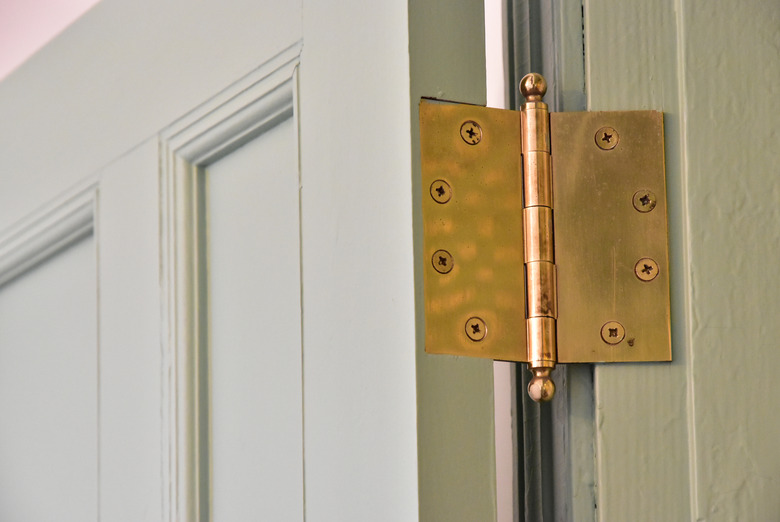How To Install, Adjust Or Remove A Spring-Loaded Hinge
A spring-loaded hinge works to ensure that a door automatically closes without you having to push or pull. It works by using the tension of the spring to move the door, and how much tension is needed depends on the weight of the door and the desired speed of the closure. Getting the correct tension is key to a safe and useful spring-loaded hinge. Installing, adjusting and removing a spring loaded hinge are therefore important skills to know.
Installing a Spring-Loaded Hinge
Installing a Spring-Loaded Hinge
First, you want to make sure the new spring-loaded hinge aligns with the location of the previous hinges. You can do this by simply holding the new hinge up to the door and checking where the screw holes are.
If the holes align, you're good. If not, you'll need to mark out where the new holes need to be. Use a smaller drill bit than the screws you're planning to use and drill about a 1/2 inch in.
You'll then want to remove the tension pin from your hinge and loosen the spring tension enough to fully open it. Screw the hinge first into the door frame, then into the door.
Finally, you'll want to put back the spring and the tension pin, following the same rules as for adjustment.
Adjusting a Spring-Loaded Hinge
Adjusting a Spring-Loaded Hinge
Before you start, you need to know what adjustment your hinge needs. Try closing the door. If it slams shut violently, you will likely want to loosen the spring-loaded hinge. If the door shuts very slowly or not at all, the hinge needs tightening.
There are two types of spring-loaded hinges: Those that require a hex key to rotate the cylinder and those that require a tension lever. Regardless of type, both of these use pins to hold the spring tension in its ideal spot to help a door close both quickly and safely.
Adjusting your spring-loaded hinge must be done with the door closed. The rule of thumb is that if you want your hinge tightened, the pin needs to be moved further up the spring. If you're loosening the hinge, the pin needs to be moved down.
First, you'll need to remove the tension ping from your hinge. If your hinge spring opens at the top, insert your hex key into this opening. If the opening is horizontal, you'll need the tension lever that came with your hinge. Now, turn the spring to expose the next coil, either tightening or loosening depending on the adjustment you want. Then, reinsert the tension pin into the newly exposed part of your spring.
Don't push the pin in all the way – test your new hinge first. If you're satisfied with the speed and force of the closure, insert your pin fully. If not, try moving it further up or down along the spring.
Removing a Spring-Loaded Hinge
Removing a Spring-Loaded Hinge
A spring-loaded hinge should only be removed when the door is closed to avoid it slamming. Using a hex wrench, open the spring so you can see the tension pin. Then, remove the pin using pliers.
You can then remove the hex wrench and allow the spring to naturally unwind. Once the spring is removed, you can take the other screws out and remove the hinge normally.
